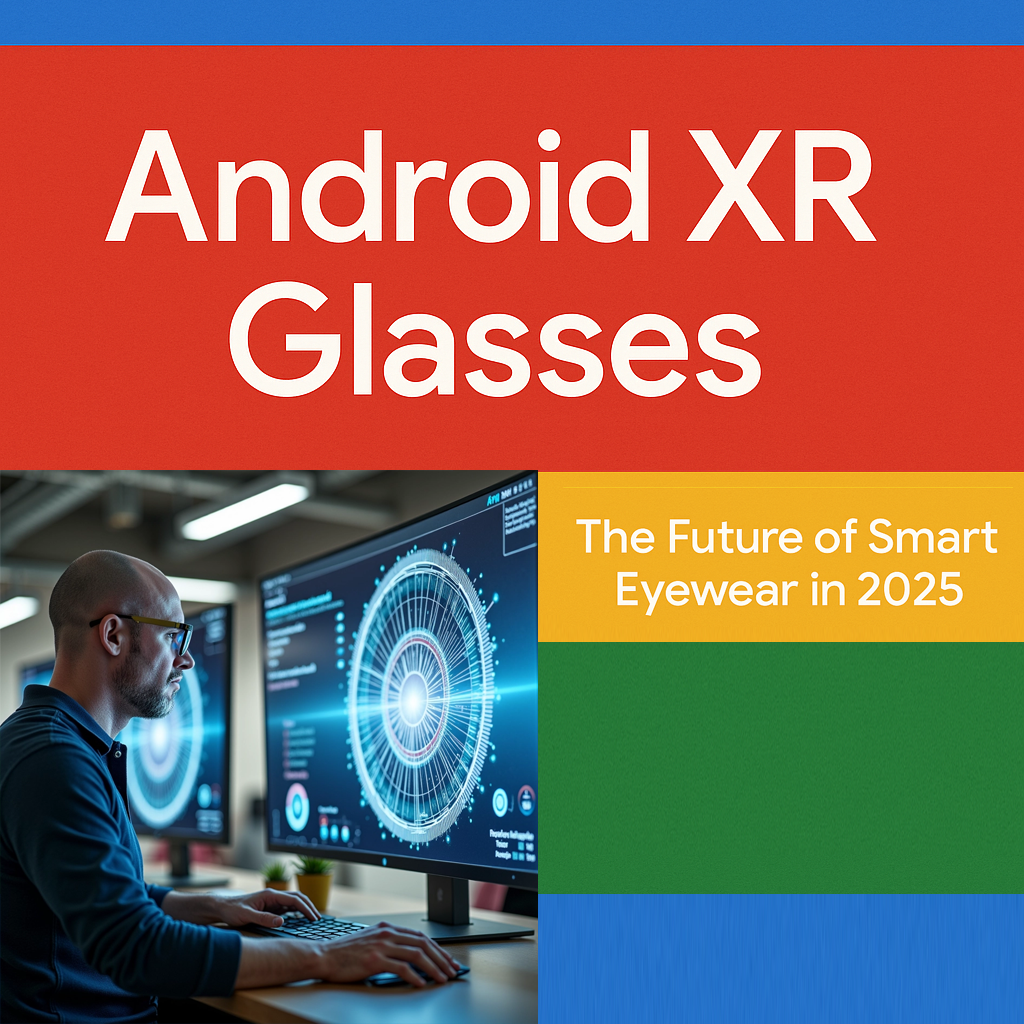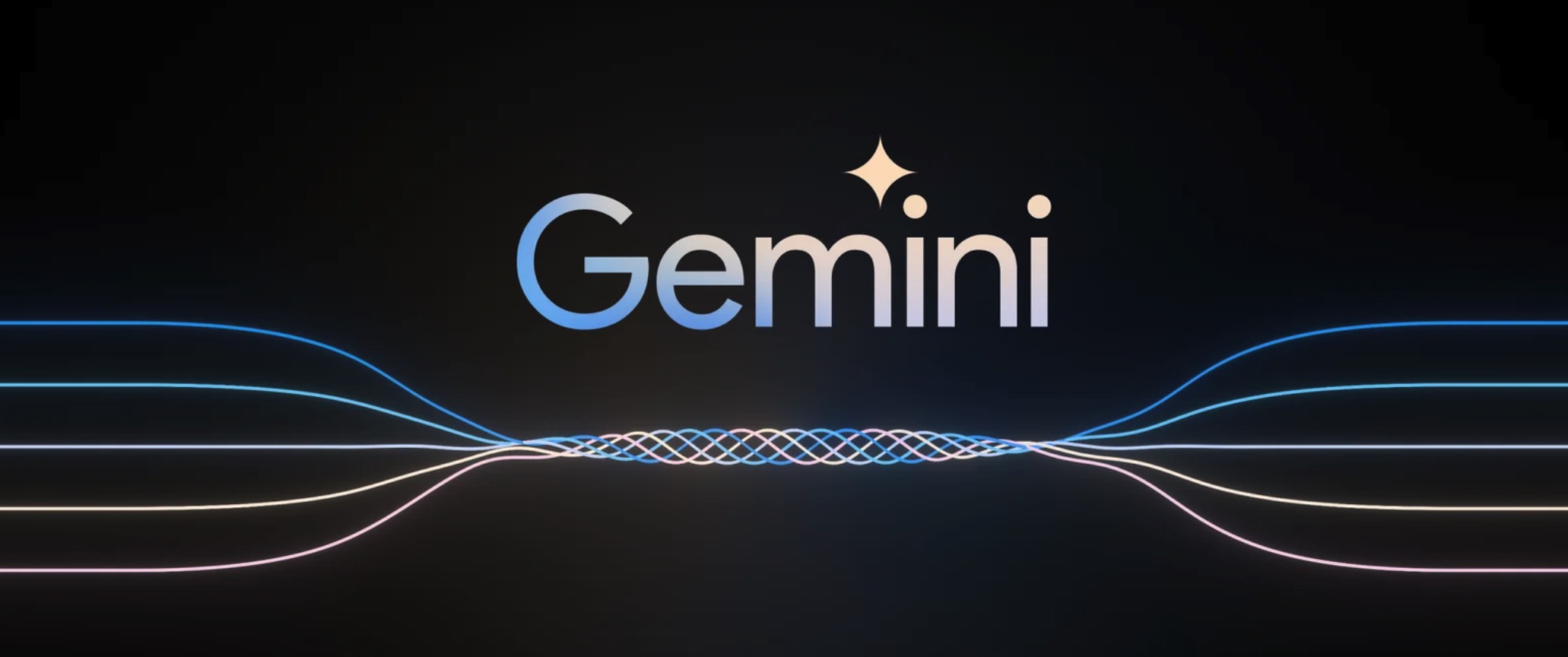Google's Android XR Glasses: The Future of Smart Eyewear in 2025
Google’s Android XR Glasses combine advanced AI, seamless design, and open partnerships to set new standards for smart eyewear in 2025—delivering real-time context-aware assistance, accessibility, and immersive user experiences.

Introduction: Why 2025 Is the Breakthrough Year for Smart Glasses
The Return of Game-Changing Tech: Google’s Bold XR Vision
Technology has reached another milestone with Google’s introduction of Android XR glasses at Google I/O 2024. This launch marks a major change and brings back excitement for both tech fans and industry experts. Google has focused on XR (extended reality), using its experience in wearable devices and artificial intelligence to expand the possibilities of smart glasses.
Convergence of AI and Wearables: A New Epoch
In 2025, advanced AI, such as Google’s Gemini AI, is built directly into wearable devices. While earlier versions of wearable computers mostly offered simple tracking or notifications, the new Google Android XR glasses provide real-time, context-aware help. Thanks to improvements in multimodal AI, fast connectivity, and small sensors, you can use features like:
- Live translation
- Hands-free navigation
- Quick information access
These glasses use powerful machine learning models to analyze what you see, hear, and experience, providing instant support as you go about your day.
The XR Ecosystem Awakens: Partnership Fuels Innovation
Google’s 2025 strategy goes beyond making new hardware. By partnering with Warby Parker, Samsung, and Xreal, Google is building an open XR ecosystem. Google brings AI expertise, while partners contribute in lenses, displays, and software. This teamwork makes Android XR glasses more accessible and sets new standards for usability and trust.
Setting the Stage for Industry Transformation
AI-powered wearables are evolving rapidly, moving from simple devices to context-aware, everyday companions. The integration of Gemini AI and advanced wearables is enabling new ways to access and interact with information, shifting users from screens to a more connected, enhanced reality. Google Android XR glasses are setting the benchmark for smart eyewear in 2025, with others like Meta Ray-Bans now being compared against Google’s standard.
Unpacking Google’s New Android XR Glasses: Features & Innovations

Standout Hardware and User Experience
- Slim, lightweight design: Comfortable for all-day wear.
- Optical see-through display: Wide (up to 70 degrees), immersive view overlays digital information onto the real world without blocking your vision.
- High-resolution microdisplays: Crisp visuals; improved lens tech reduces distortion and eye strain.
- Built-in cameras: Instantly capture moments or perform visual searches, with previews shown directly in the lens.
- Spatial microphones & sensors: Gyroscope, accelerometer, and magnetometer help glasses understand your surroundings and context.
- Hands-free control: Use gestures or voice commands.
- Low latency & efficient energy use: Improved battery life and comfort.
Gemini AI Integration: What Sets Google Apart
Gemini, Google’s multimodal AI, is the key differentiator:
- Gemini Live: Provides real-time, context-aware help using visual, audio, and contextual data.
- Look at a landmark and ask, “What’s this?”
- Automatic translations with live subtitles during conversations.
- Seamless task-switching: navigation, messaging, object recognition without changing settings.
- Sensor fusion: Combines data from various sensors for accurate context.
- On-device neural processing: Enables high performance with privacy.
- Simple, intuitive interface: Tracks context across multiple input types, setting a new standard for wearable AI.
Accessibility and Everyday Use Cases
- Real-time translation overlays
- Navigation prompts
- Hands-free information access
- Support for users with mobility or vision challenges
For professionals: step-by-step instructions, remote expert guidance, and augmented reality tools make AR practical for everyday and workplace use.
Standout Hardware and User Experience
Sleek, Comfortable Design
- Looks and feels like regular eyeglasses; lightweight and comfortable for long use.
- Balanced fit, minimal electronics.
- Adjustable nose pads, flexible arms, and options for prescription lenses.
High-Precision In-Lens Display
- MicroLED or low-power tech for clear text and overlays.
- Does not block natural vision.
- Ideal for notifications, live translation, navigation, and AI chat responses.
Advanced Camera, Microphone, and Sensor Array
- Forward-facing camera: capture images, recognize objects, use visual search.
- Microphones pick up sound from all directions.
- Sensors (accelerometers, gyroscopes, ambient light) track head movement and activity, enabling adaptive feedback.
Seamless, Hands-Free Interactions
- Control with voice, head movements, or touch.
- Always-on microphones for instant response.
- No need to interrupt activities—just glance, speak, or gesture.
Display Quality & Battery
- Readable in various lighting; all-day battery with regular use.
- Simple visual signals for battery and notifications.
Privacy and Safety by Design
- Camera indicator light when active.
- Easy hardware controls to disable mics and camera.
- Strong privacy standards and compliance.
Gemini AI Integration: What Sets Google Apart
Real-Time, Context-Aware Assistance with Gemini Live
- Uses Gemini 2.5 Flash model for contextual support.
- Instantly translates foreign signs.
- Summarizes or guides use of complex objects.
- Strong reasoning and real-world data for smooth, hands-free experience.
Multimodal Input & Seamless UI
- Handles vision, audio, and app signals simultaneously.
- Interact by speaking, gesturing, or looking.
- Recognizes objects, converts speech to text, and overlays AR information.
Industry-Leading Workflow Design
- Gemini API allows third-party developers to build context-aware, privacy-focused apps.
- Real-time updates and explainable AI for business/regulatory use.
- Flexible, reviewable, audit-ready AR workflows.
Accessibility and Everyday Use Cases
Seamless Translation and Real-Time Communication
- Instantly translate spoken and written language.
- Live subtitles overlay for conversations.
- Useful for travelers, business professionals, and hearing-impaired users.
- Recognizes and translates both audio and visual text in real time.
Effortless Navigation and Spatial Awareness
- Step-by-step directions both outdoors and indoors.
- Useful for complex spaces like airports or shopping centers.
- Sensors and AI adjust directions in real time.
Productivity and Hands-Free Access
- Voice and gesture commands for schedules, reminders, info summaries, emails, and meetings.
- Hands-free real-time instructions or diagrams for technical, healthcare, or teaching jobs.
- Proven workplace use in earlier versions.
My Perspective: Practical AR for Everyday Empowerment
- Key advantage: supports daily life without being intrusive.
- Hands-free, context-aware info lowers cognitive load and improves awareness.
- Benefits users with language, mobility, or sensory challenges.
Everyday Scenarios
- Translate a menu at a restaurant
- Navigate unfamiliar transport
- Summarize projects in meetings
- Gemini’s contextual awareness predicts and delivers what you need

Strategic Partnerships: Warby Parker, Samsung, Xreal & The Open XR Ecosystem
Warby Parker: Fashion Meets Function
- Warby Parker brings prescription lenses and frame styles.
- Digital fitting and in-store support make smart glasses accessible and stylish.
Samsung: Hardware Synergy & Distribution
- Samsung’s hardware expertise and global distribution.
- Focus on displays, battery life, device integration.
- Enables fast, high-quality XR glasses rollout.
- Features like device switching, secure data sharing, and on-device AI.
Xreal Project Aura: Third-Party Innovation
- Xreal makes spatial computing devices (Aura, Eye) using Android XR and Gemini AI.
- Supports diverse use cases and rapid hardware/software innovation.
- Open platform encourages quick updates and trusted AI.
The Open XR Ecosystem Advantage
- Openness, flexibility, and interoperability.
- Community-driven innovation for fast feature development.
- Developers and companies benefit from open APIs and fewer vendor lock-ins.
- Builds trust and accelerates wearable adoption.
How Google’s XR Glasses Compare to Meta Ray-Bans & Other Competitors
AI Capabilities Head-to-Head
| Feature | Google XR Glasses (Gemini AI) | Meta Ray-Bans (Meta AI) |
|---|---|---|
| Real-time, context-aware help | Yes (multimodal, contextually adaptive) | Limited (media sharing, social focus) |
| Integration with services | Deep, across Google & Android ecosystem | Primarily Meta/Facebook services |
| Privacy & Transparency | Strict controls, audit-ready, XAI | LED for camera, less strict overall |
| Developer support | Open APIs, SDK, large Android community | Closed, limited developer options |
- Gemini AI: Adapts to visual, audio, and location context; instant translation, object recognition, and task recommendations.
- Meta AI: Focuses on voice commands, photos/videos, and livestreaming.
Seamless Integration Across Devices
- Google XR glasses connect with Android phones, tablets, smart home devices, and cloud services.
- Deep integration allows direct access to notifications, calls, navigation, and productivity tools.
- Meta Ray-Bans mainly connect to Meta apps.
Gemini AI as a Contextual User Experience Engine
- Gemini allows hands-free, multi-modal operation and seamless app switching.
- Contextual understanding—e.g., translating a menu, making reservations by voice or gaze.
App Ecosystem & Community
- Google supports broad developer access and quick feature rollouts.
- Meta Ray-Bans offer fewer third-party options.
Early Impressions
- User-friendly, flexible, and customizable.
- Open ecosystem offers more hardware/lens choices and adaptability.
- Well-integrated with Google’s services.
Scientific Perspective
- Research shows users prefer devices that integrate into a larger, familiar ecosystem.
- Gemini’s advanced models boost usability and adoption.
The Road Ahead: What’s Next for Android XR Glasses
Upcoming Features and Roadmap
- Deeper Gemini AI integration
- Advanced in-lens displays
- High-quality cameras, mics, and speakers
- Direct access to Google apps (Messages, Maps, Calendar, Tasks, Photos, Translate)
- All hands-free, no phone required
Gemini will soon handle:
- Live subtitle translation
- Easy appointment scheduling
- Visual search using cameras/mics
A full reference hardware/software platform is coming by end of 2025, supporting both glasses and headsets. The Android XR SDK Developer Preview 2 is already available for early development.
Partners like Warby Parker, Samsung, and Xreal are developing supporting products and features, ensuring steady innovation.
Google’s roadmap emphasizes openness, frequent updates, and a transparent, competitive marketplace. Projects like Samsung’s Project Moohan and Xreal’s developer editions will further expand the ecosystem.
Future updates will focus on:
- Battery life improvements
- Enhanced privacy settings
- Even smarter AI features
Challenges and Opportunities
Addressing Battery Life and Wearability
- Small device batteries struggle with always-on AI and sensors.
- Need for energy-efficient chipsets and smart power management.
- Solutions must balance performance with comfort.
Privacy, Security, and Regulatory Compliance
- Cameras/mics and AI raise privacy concerns.
- AI glasses can quickly identify personal info about bystanders.
- Compliance with GDPR, CCPA, and global regulations is essential.
- Clear user controls are a must, especially for enterprise use.
The Role of Explainable AI
- Wearable AI must explain its actions clearly (Explainable AI/XAI).
- Transparency builds trust and meets regulatory demands.
- Critical in healthcare, education, and public settings.
Opportunities for Real-World AI Training and Innovation
- Real-world use enables rapid AI improvement through user feedback.
- Open collaboration with partners drives innovation and trust.
My Perspective:
Training and checking AI in real-world, wearable settings will drive major advances. Balancing high performance, transparency, and user control is key for future leaders in AI-powered wearables.
Are Google’s XR Glasses Ready to Lead the Next Wearable Revolution?
Key Differentiators
- Gemini AI: Advanced context awareness, multimodal input, and real-time hands-free help.
- Edge AI processing & sensor fusion: Fast, private, and responsive.
- Open ecosystem: Rapid innovation, prescription lens options, and adaptable hardware/software.
- Partnerships: Warby Parker (lenses), Samsung (hardware), Xreal (innovation).
Responsible AI and User Choice
- Google emphasizes transparency, explainability, and user control.
- Audit-ready workflows and explainable AI build trust for everyday users and enterprises.
- The true test: empowering and reassuring users in daily life.
What’s Next
- More advanced AI workflows and deeper Android/Gemini integration.
- Focus on battery, privacy, and regulatory compliance.
- Open partnerships position Google to lead wearable technology innovation.
Are Google’s XR glasses set to lead the next wave of wearable technology? Current progress suggests yes—if Google continues to focus on responsible AI and user needs.
Share your opinion:
Would you trust AI-powered glasses in your daily routine? If you’re a developer or technologist, join the discussion on open vs. closed XR ecosystems.
Frequently asked questions
- What makes Google's Android XR Glasses unique compared to competitors?
Google's Android XR Glasses stand out due to integrated Gemini AI, real-time context-aware assistance, multimodal input, and deep ecosystem integration. Partnerships with Warby Parker, Samsung, and Xreal foster an open XR ecosystem, offering flexibility, privacy controls, and a wide range of hardware and software features.
- How do the XR Glasses enhance everyday productivity and accessibility?
The glasses provide hands-free access to information, live translation, navigation, and real-time communication. Accessibility features support users with mobility or vision challenges, while professionals can receive step-by-step guidance or remote support during complex tasks.
- What privacy and safety features are included in Google's XR Glasses?
Privacy is built into the hardware with camera indicator lights, easy microphone/camera controls, and strict data management. Gemini AI enforces privacy by design, offering clear user controls, explainable AI, and compliance with data protection regulations.
- What is Gemini AI and how does it improve the smart glasses experience?
Gemini AI is Google's multimodal AI engine, enabling real-time, context-sensitive assistance by analyzing visual, audio, and environmental data. It powers live translation, object recognition, hands-free navigation, and seamless app integration for a smarter user experience.
- Who are Google's key partners in the XR Glasses ecosystem and why do they matter?
Key partners include Warby Parker (for prescription lenses and fashion), Samsung (for hardware and distribution), and Xreal (for third-party innovation). These collaborations create a flexible, open XR ecosystem, accelerating innovation and expanding choices for users and developers.
Ready to Build Your Own AI?
Try FlowHunt’s no-code platform to create your own chatbots and AI tools. Experience seamless automation and intelligent workflows.



